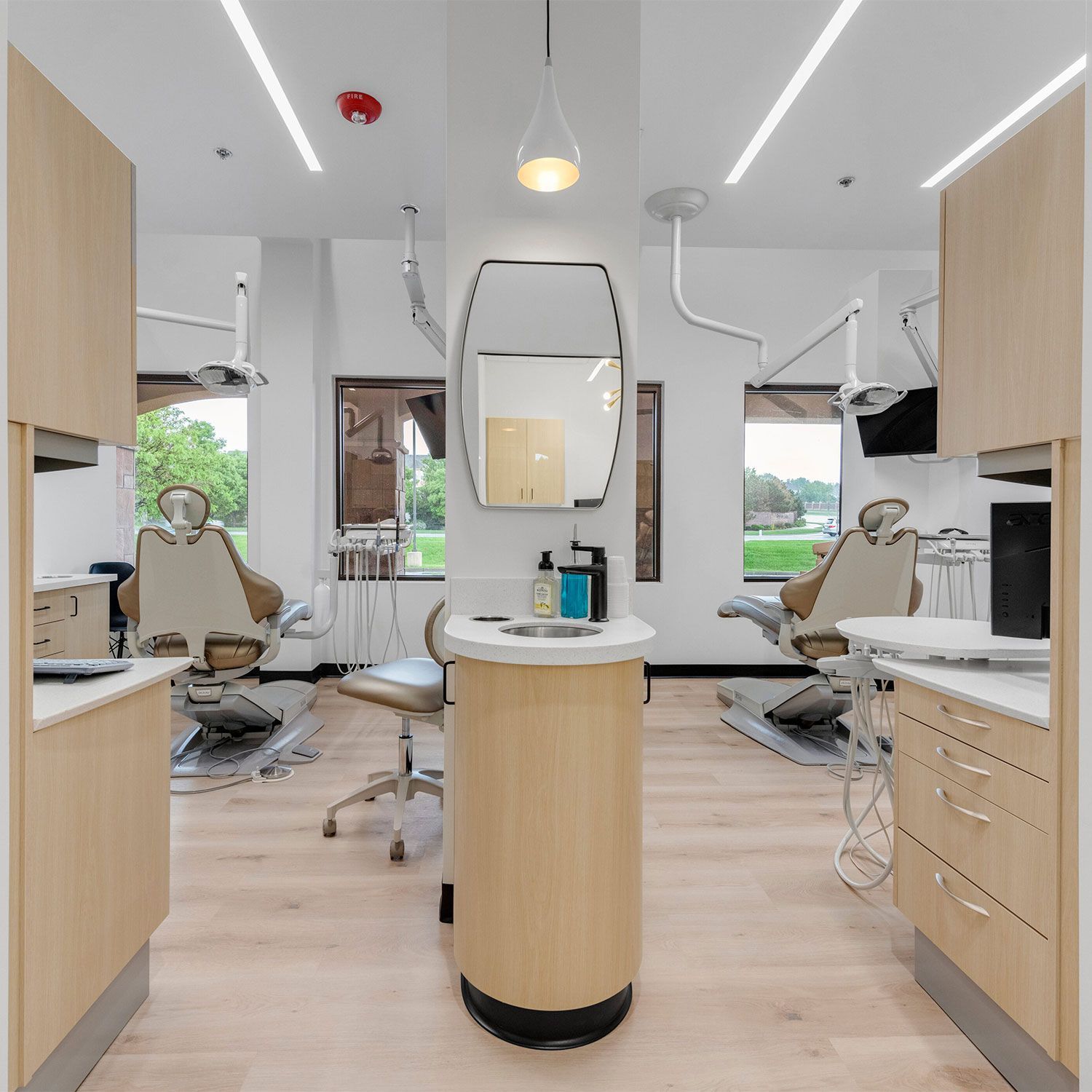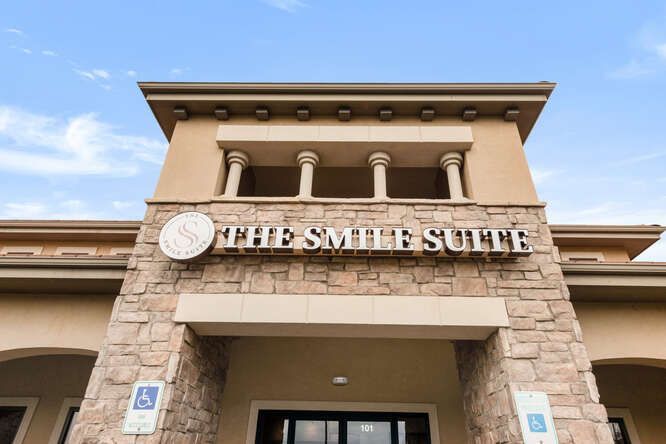Subperiosteal Implants at The Smile Suite
What Are Subperiosteal Implants?
Subperiosteal implantation is another method of
dental implant where the implant is inserted above the bone and under the periosteum – a film of connective tissue surrounding the bone on the outside. This procedure is not typically used today, but it is important to know about it if you and your dentist determine that it is necessary.

Who Needs Subperiosteal Implants?
Subperiosteal implants are typically recommended for people who have experienced significant bone loss and cannot receive traditional dental implants due to the lack of adequate jawbone structure to support the implant. Some of the reasons for this type of bone loss include the following:
- Advanced periodontal disease
- Tooth loss or advanced gum disease
- Trauma to the jaw
- Resorption of the jawbone due to aging
- Previous extractions or other surgical procedures that resulted in jawbone loss
Subperiosteal implants are designed to overcome the issue of jawbone loss by being placed on top of the existing jawbone rather than being placed directly into it. This allows the implant to be securely anchored in place, even in cases with limited jawbone height or width.
It's important to note that subperiosteal implants are not suitable for everyone, and the best type of implant for an individual depends on their unique needs and jawbone condition. A dentist or oral surgeon can provide a recommendation based on a thorough evaluation of the individual's oral health and medical history.
What Are The Benefits of Subperiosteal Implants?
Subperiosteal implants offer several benefits to patients who require dental implants but have limited jawbone structure, including:
- Preservation of existing jawbone: Unlike traditional dental implants, subperiosteal implants do not require the removal of healthy jawbone tissue, which helps to preserve the existing jawbone structure.
- No need for bone grafting: Subperiosteal implants can be used without requiring bone grafting procedures, which can be both time-consuming and expensive.
- Stable support: The subperiosteal implants are attached to the outer surface of the jawbone, providing a stable foundation for the replacement teeth.
- Reduced surgical time: The procedure to place subperiosteal implants is often quicker and less invasive than other types of implant surgery, which can result in a faster recovery time for the patient.
- Cost-effective: Subperiosteal implants are often more cost-effective than traditional dental implants, especially when bone grafting procedures are not required.
- Improved esthetics: Subperiosteal implants can provide a more natural-looking result, especially when the gums have receded or the jawbone has shrunk due to aging or disease.
The success of subperiosteal implants, as with any other type of dental implant, depends on the patient's overall health, the jawbone's condition, and the oral surgeon's skill and experience. A comprehensive evaluation and consultation with a dental professional are necessary to determine if subperiosteal implants are suitable.
How Do Subperiosteal Implants Work?
If you are a good candidate for dental implants, the process involved in placing subperiosteal implants is as follows:
-
Phase 1: Initial Consultation and Evaluation
The first step is to consult with a dental professional who will evaluate your oral health, medical history, and jawbone condition to determine if subperiosteal implants are a suitable option for you.
-
Phase 2: Planning and Preparation
If it is determined that subperiosteal implants are a good option, the next step is to plan the placement of the implants. This may involve taking X-rays, CT scans, or other imaging studies to determine the best placement for the implants.
-
Phase 3: Surgery
The procedure to place the subperiosteal implants is typically performed under local or general anesthesia. During the surgery, an incision in the gum is made to expose the jawbone and create pockets in the gum tissue where the implant posts will be placed. The posts will then be attached to the outer surface of the jawbone.
-
Phase 4: Healing and Integration
After the surgery, the gum tissue will be sutured closed, and the patient will be given instructions for post-operative care. Over the next several weeks, the implant posts will integrate with the surrounding jawbone, creating a stable foundation for the replacement teeth.
-
Phase 5: Attachment of Abutments and Teeth
Once the implants have healed within the jawbone, the dentist will attach abutments to the implant posts. These abutments will serve as the foundation for the replacement teeth. The replacement teeth can be attached to the abutments permanently cemented or secured with a screw.
-
Phase 6: Final Restoration
After the replacement teeth have been attached to the abutments, the patient will return for a final restoration appointment. The dentist will evaluate the fit and function of the replacement teeth and make any necessary adjustments.
It's important to remember that the specific process for placing subperiosteal implants may vary depending on the individual's unique needs and the jawbone condition. The above is a general overview of the process involved in placing subperiosteal implants.
What to Expect After the Subperiosteal Procedure?
After the subperiosteal implant procedure, it's common to experience some swelling, discomfort, and tenderness in the surgical area. This is normal and can be managed with over-the-counter pain medications and cold compresses. Here's what you can expect during the recovery period:
-
Pain and swelling:
You can expect some pain and swelling in the surgical area for a few days after the procedure. Your dentist will assist you with pain medication to manage any discomfort.
-
Bruising:
Some bruising is also common in the days following the procedure. This will usually resolve on its own within a few days.
-
Diet:
You may need to stick to a soft diet for the first few days after the procedure to avoid putting pressure on the surgical site. Your dentist will provide specific instructions on what you can and cannot eat.
-
Oral hygiene:
Maintaining good oral hygiene to promote healing and prevent infection is essential. Your dentist will provide instructions on how to care for the surgical site and when you can resume your regular oral hygiene routine.
-
Follow-up appointments:
You will need to attend follow-up appointments with your dentist to monitor the healing process and make any necessary adjustments to the implant.
-
Avoiding physical activity:
You may need to avoid exercising the area for the first few days after the procedure to allow the surgical site to heal.
-
Smoking:
If you smoke, it's important to avoid smoking for at least 24 hours after the procedure to minimize the risk of complications and promote healing.
Keep in mind that every patient is different, and the recovery process can vary depending on the individual's unique needs and the complexity of the procedure. Your dentist will provide specific instructions and guidelines based on your situation.
CLIENT REVIEW

I have been looking for an amazing dentist office for sometime and was thrilled to meet Dr. Nicholson. She was kind, personable, very professional and very detail oriented. Having a dentist who truly cares about your dental health and their patients is a breath of fresh air. I am so glad I got to meet Dr. Nicholson and her team.
Michelle Renee

Dr.Nicholson and her staff are the best of the best! Jenna is fabulous with what she does. Very calm modern office makes you feel so comfortable.
Mayra Ramos

Dr. Nicholson's practice is full spectrum. Whether you are needing personalized service or a place for your whole family, The Smile Suite provides a state of the art, pristine and welcoming atmosphere. Jenna keeps pace with the latest dental technology and performs exceptional dental care.
Megan and Jeremy

I have been a patient of Dr Nicholson for several years and she is very skilled. She listens, takes time, and is aware of what's new in dentistry and what is necessary vs not necessary. Her work is exceptional. I have recommended her to friends.
Ginney Hitchon

Our family has been seeing Dr. Nicholson for years. Jenna is fabulous at what she does... She is very caring and puts the patient first. She will listen to all your concerns and help you make the best informed decisions. Dr. Nicholson has the most up to date technology and is very skilled in what she does. Not only is Jenna a truly amazing dentist but The Smile Suite is an absolutely stunning and comfortable place to receive dental care. We trust her with our own dental needs and our children's.
Morgyn Hood

I chose to switch dentists after almost a decade. I was very nervous about my appointment since I had been neglecting to floss for some time. I was immediately put at ease. Dr. Nicholson spent time talking with me and genuinely cared about my concerns. The staff was professional and friendly. The office was comforting and incredibly clean. Dr. Nicholson is quite clearly talented in both dentistry and service.
Devon Torres
QUICK LINKS
Providing beautiful healthy smiles and personalized service
Join our newsletter and find out more 720-679-9689
Contact Us
We will get back to you as soon as possible
Please try again later

| All Rights Reserved | The Smile Suite | Designed by Lingows